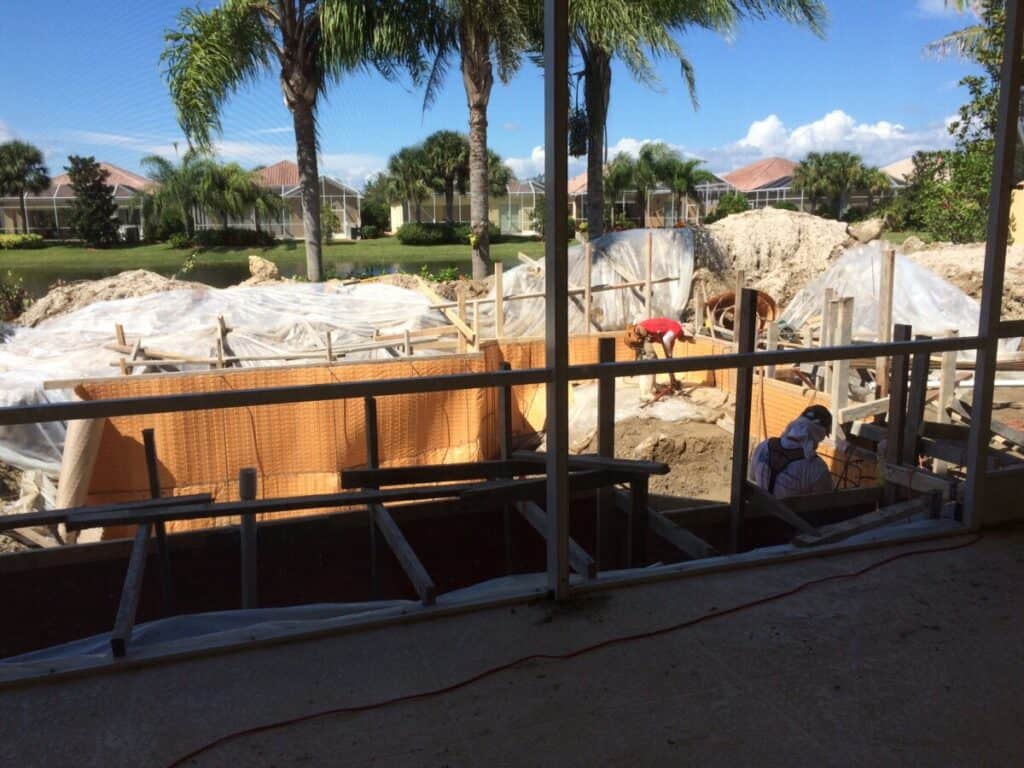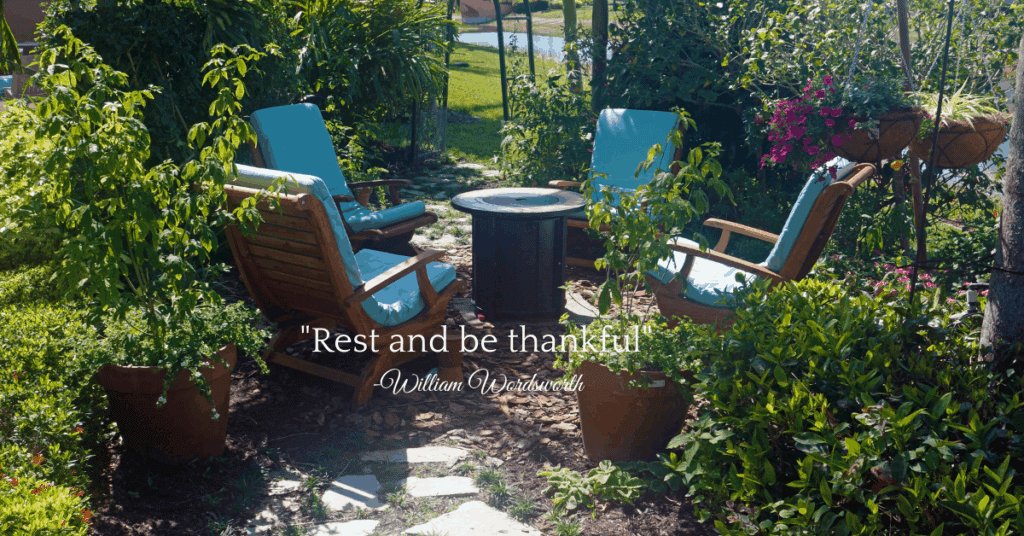Our Groundcover Project to Defeat Rabbits!
This is a real-time project to replace an area of underperforming turf with low-maintenance ground cover. The first goal is to replace a section of lawn in an area growing progressively more shaded, as nearby trees and shrubs grow, with perennial plant material that can thrive in various light conditions. OUR second goal is to ensure that we choose plant material that will NOT appeal to our neighborhood marsh rabbit tribe!
(Our garden is located in coastal Southwest Florida in zone 10b. Some of our choices will grow in zones considerably farther north. If you like our choices, check your own, plant hardiness zones, or talk to your local county extension service.)
Update: Rabbits in Winter
After seven months of no damage, we found some chewed Asiatic jasmine today. It is January and cold in Florida, and local wildlife are hungry. We noticed that the jasmine near Cuban oregano plants was undamaged. I am propagating some more Cuban oregano for the chewed area. Here is how to grow Cuban oregano.
Here is an update on the project after several months ‘A Garden Transformation’
The Important Decision Points for Low Maintenance Ground Cover
The selected material needs to fill five needs. If you are doing the same project, you can match these five needs to plants that live in your area.
Our criteria for low maintenance ground cover for this project.
- Height-in this case, 12″ or less, about 6′ would be ideal
- Light-Part Sun, about 6 hours. (measure your hours of sun to know this)
- Soil-ours is South Florida’s fast-draining sand with no natural nutrients but with several years of organic amendment
- Drainage/water- even with amendments, this is fast-draining soil
- Flower-Our preference is to replace the turf with another low and green material as out backyard is small and has existing flower beds nearby, for color
The Objectives of The Ground Cover Project
We need a space for a specific use, it is located directly behind a typical Florida screened swimming pool area. The location will serve as a small sitting area with a fire pit and enclose a barbeque cooking area and walkways to the pond beyond. The seating area is a small space and is visible from the house and pool area, and it needs to offer a tempting view from the house. For greater privacy trees and shrubs enclose the plot, and it, in turn, views both the pool, the house area, and the pond.
Secondary Issues
Our new seating area space is in part sun, and due to growing tree plantings, it should become slightly shadier over time. Soil quality is of course always important; the soil is standard South Florida sand (which means it was originally not soil at all), and it has been amended with organic matter over time.
Marsh Rabbits

The area is also frequented by a population of the local Marsh Rabbits (a variety of Cottontail.) Many of the most desirable ground cover varieties are susceptible to rabbit damage. Our intention is to retain the evergreen appearance of the turf. We will add stepping stones which means that the ground cover itself does not need to be “walkable.”
The location is in hardiness zone 10b, warm, humid with two seasons, wet and dry.
Low Maintenance Ground Cover Definition
For our purposes, we define ground cover as “low growing plant material used to cover bare soil.” It should be creeping and spreading. We recognize that some creeping ground covers can climb. We need to avoid high-maintenance, fast growers. The plants we choose must be low-maintenance perennials. We don’t want to do this again, it needs to be a permanent planting.
It is also true that in some applications, taller plant materials cover the ground well. Some grasses and daylilies, for example, cover open spaces and slopes superbly. For our small space, a traditional definition of ground cover as low and creeping is ideal.
Ideas For Your Own Project
Think about your spot and the effect you would like to create. This post contains a list of ground-covering options.
Photo of The Plants Being Tested
This is a photo of the “shortlist” of plant materials we are testing. The ground cover plant materials have been chosen to meet these needs:
- Primarily Green in color, and blends smoothly beside the turf.
- Low growing.
- Not favored by rabbits.
- We have used these materials before and like them.
- They have minor attractiveness to pests, live in a wide range of sun/shade areas, and are low-maintenance materials.
Ground Cover “Short List”
Here is what we have chosen to test.

From Left to Right -The Plants and Their “Protectors”
- Chive, this herb is a member of the onion family and is thought to be disliked by rabbits and deer.
- Asiatic Jasmine provides a shiny, low-maintenance ground cover and will produce a turf-like low and green finish.
- Blue Daze-Evolvulus glomeratus this plant has true blue flowers and has a low-growth habit.
- Cuban Oregano-Plectranthus amboinicus is a perennial succulent. It is a member of the Laminaceae family (mint). It has fuzzy leaves and a noticeable scent. Fuzzy leaves and strong scent are usually not desirable to rabbits.
- Dwarf Mondo grass-the most like turf, darker and very appealing.
- We will also include liriope.
Definitions
- Asiatic Jasmine`- a beautiful, thick dark green cover, a plant we have used with success but known to be eaten by rabbits, about 6″ Tall
- Liriope (Lily Turf)– dark green, spear-like grass, about 10″ Tall. We would prefer the height of the Asiatic Jasmine, but we like this one, and it does not have a reputation as “rabbit preferred”
- Blue Daze-we bought the plant at the recommendation of the garden center, the new variety is a brilliant blue, and we have used it before. However, that was in a house with a fenced backyard and two Jack Russels. We think that rabbits may eat this lovely plant and we expect to use it in a hanging basket
- Dwarf Mondo Grass-this is a lovely short dark green which looks like turf with a coarser blade. We do admire this plant and have enjoyed it in the past. It does not have Jasmine’s reputation for rabbit appreciation but is a very slow grower.
Rabbit Behavior
The wild rabbits can be relentless and can do considerable damage. We recently planted 12 Cosmos plants in the morning and “unplanted” them by afternoon! They are now in pots in the enclosed pool area. Rabbits are picketing the pool!
Rabbits, like deer, have preferred foods. Rabbits prefer young shoots and dislike mature, hard, prickly plants, fuzzy leaves and many scents, particularly in the onion family.
However, this always depends on the need. If they are hungry they, like all of us, are less fussy. There is no hard rule.
Defense Against The Dark Arts Of The Rabbit
The best defense against hungry animals is a fixed barrier. This requires wire mesh less than I” in diameter and buried underground at least 3″. In an environment like ours, in which fencing is not an option the choice is to remove attractive living conditions. This would include, wood, underbrush, low dense plant materials as much as possible.
The last resort is to make the plant material unpalatable.
The Test And Our “Weapons”
The test is simple. We have just placed the plants in their nursery pots in the area we wish to plant for the pleasure of the rabbits.
Here is the weapon we are testing.
We are gardeners with long histories of dealing with predator rabbits. Our losses go back for a long time. We have tried many things.
- Vinegar-works sometimes
- Irish Spring Soap-our local botanical garden had mixed success we hear, for us not so much. We have clean soil
- Bitter Apple spray-this may have had some effect but rain and irrigation shortened its lifespan
- Cayenne pepper- used as a condiment by the rabbits
Current Deterrents In Test
Garden herbs and plants
- Cuban Oregano
- Chives (allium in the onion family)
- Mint
- Fox scent is something we used on another location and we may have been successful. These products wash off and will require repetition. If these products are successful they often remain so until the new crop of spring bunnies begins to experiment. Then we need to reinforce the message
Other Plants Not Usually Loved By Rabbits
- Sweet Alyssum
- Ageratum
- Lantana
- Geranium
- Wax Begonia
- Strawflower
- Snapdragon
- Pepper
- Globe Thistle
- Catmint
- Wormwood
- Crown of Thorns
Note the common attributes, textured, fuzzy, and strong-scented
Update After A Few Weeks
The plants have been sitting in place in rabbit, rich territory and are as yet untouched! We have lined up the ground cover plants with the deterrent plants and the rabbits graze on the lawn all around and have not yet touched our test plants!
All of the onion and mint-related plants seem to be effective so far. The Cuban Oregano appears to be a large deterrent.
The problem now seems to be, what ratio of “tasty plants” to “deterrent plants” is needed?
How To Identify Rabbit Damage
The rabbit who visited your garden while you were unaware, left clean-cut branches. This is visible in tender young shoots. They will cut tulips at the ground level. This clean-cutting is because rabbits are not true rodents and have two sets of incisors that cut cleanly!
Next Steps
We lay out the design, allowing room for a walkway and central seating area as well as planted areas. As we progress I will post a follow-up. Here it is “Groundcover Update“.

Resources For Planting Groundcovers
In The Garden, How To Add Groundcovers
In The Garden, Solve 10 Problems With Groundcover
November In The South Florida Garden, Groundcover Update With Photos
‘Liriope vs Mondo Grass-Ground Cover for your Garden.‘
‘Grow A Beautiful Green Wall’-this plant will cover spaces upright as well as ground.
A Beautiful Green Ground Cover-Asiatic Jasmine
‘Make a Perfect Spring Garden in Seven Simple Steps.’
‘It’s July in the South Florida Garden’

